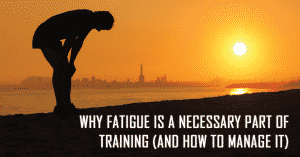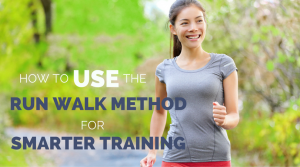The first step to improving is almost always identifying your strengths and weaknesses.
Whether it be preparing for a job interview or improving your 5k PR by 30 seconds, identifying the areas that need the most work allows you to dedicate your time to the activities and training that will provide the most value.
The difficulty lies in accurately targeting the right weaknesses, especially in running where what you feel doesn’t always correlate with what is happening physiologically in your body.
For example, the heavy, cement-like feeling in your arms and legs at the end of a 5k isn’t a sign of muscle weakness or that you need to spend time in the gym.
Rather, this feeling is caused by the release of hydrogen ions when racing beyond your anaerobic threshold, which creates an acidic environment in the muscles and impairs muscle contraction.
This is why runners are better served hitting the roads for a tempo run than they are hitting the weight room if they want to avoid fading at the end of a race.
Perhaps the most often misunderstood concept of training, and the most difficult for runners to identify where their weakness might be, is aerobic endurance versus speed.
Because it’s often difficult to “feel” aerobic endurance, it’s easy to think that not being able to kick the last 800 meters of a race or not being able to race faster at shorter distances is due to a lack of speed.
This is why so many runners turn to the track for lung-busting 400’s to help them get faster.
Unfortunately, if you’re approaching training this way, you may be focused on the wrong weakness and thereby not maximizing your training time or your workouts.
Here’s an eye-opening way to examine how speed and aerobic endurance influence your performance on race day:
How much speed do you need?
From a training standpoint, speed is rarely the limiting factor in how fast you can race, even for a distance as “short” as the 5k.
Let’s examine this idea in more depth as the great coach Arthur Lydiard once did when he popularized training 800 and 1500 meter runners with a steady diet of 100 mile weeks:
If you want to run 20 minutes for the 5k, you need to average 6:25 pace per mile.
Technically, that means the fastest pace you need to be able to run is 6:20 per mile.
If you’re a 21-minute 5k runner or a 3:25 marathoner (roughly the equivalent of a 21-minute 5k runner), I have little doubt you can run a 6:20 mile; you’re probably capable of running a mile close to sub 6 minutes.
Thus, the problem isn’t that you don’t have enough speed to run a 20-minute 5k, it’s that you lack the endurance to run three 6:25 miles without stopping.
Therefore, when you’re examining your training and identifying your strengths and weaknesses, the most obvious areas of improvement are going to come from improving your aerobic endurance and lactate threshold. If you can already run far faster than your goal race pace, the problem isn’t your speed.
Aerobic capacity and lactate threshold, what running coaches refer to as “strength” work, are the backbone of your ability to sustain a fast pace for a long period of time. In short, the higher your aerobic capacity, the longer you can run near your maximum speed.
Speed during the end of a race
All runners want to open up the stride and close hard the last 400 meters of race.
Not only does it feel great to pass droves of competitors, but finishing strong helps motivate you for the next race.
However, actual speed has little to do with how fast a runner can finish the last 400 or 800 meters of race.
As discussed above, most runners already have the absolute speed necessary to fly through the finishing shoot.
A 20-minute 5k runner is probably already doing multiple 400 meter repeats at about 5:30 pace (60 seconds faster than race pace). However, finishing the last 400 meters of a 5k at 5:30 pace is probably next to impossible for that same runner. Again, the ability to kick and finish fast is not limited by absolute speed.
Rather, the limiting factors are the ability to run fast when tired or to hit the last 800 meters in a less oxygen deprived state.
Therefore, if you’re a runner who is trying to improve your finishing speed or you tend to fade during the last mile, your training time would be better spent improving your aerobic capacity, not necessarily your absolute speed.
Tempo runs and threshold intervals are going to address your late race “speed” weaknesses better than a steady diet of 400 meter repeats.
What role does speed play?
Certainly, speed is a component of a well balanced training plan and it’s important to include speed workouts to improve your running efficiency and V02max. If you completely neglect speed all together, or any energy system for that matter, your performance will suffer.
Perhaps the biggest role speed plays is that it helps improve your running economy and efficiency.
In unscientific terms, speedwork helps you run goal race pace with less effort.
However, there is a limit to how much you can develop your absolute speed. At some point, your body approaches its natural talent point and working to improve speed provides diminishing returns. Luckily, improving your aerobic capacity is virtually limitless.
Therefore, once you’re able to run about 20-30 seconds faster than your goal 5k pace for a full mile, you’ve probably developed enough speed to comfortably race your goal pace.
The focus in your training should then be turned to improving your aerobic capacity and lactate threshold, which will help you develop the physiological fitness to race faster and maintain a top end speed for longer.
How this works in your training
This training philosophy that favors strength (aerobic endurance) over speed is the backbone of your training at RunnersConnect.
Whether you’re being personally coached by a member of our staff or you’re using one of our basic plans, we design all our training with this principle in mind.
So, the next time you’re wondering why you might not have a plethora of speed workouts on your schedule, you can look back at this article and better understand the long-term process of your training.
Likewise, when you’re analyzing your training and looking to identify the areas you need to improve the most, you can ask yourself whether it’s really your speed that is holding you back or if you actually need to get stronger aerobically.
RunnersConnect Bonus
Download your FREE Long Run and Aerobic Pacing Calculator now.
Need help converting your race times to your optimal easy and long run pace? Download our FREE calculator and we’ll do the math for you.
A version of this post originally appeared at competitor.com






6 Responses
So, if I can run a mile ~70-75 seconds faster than my 5k pace, my most basic need for a better 5k is more miles per week?
@dan, not just more miles, it is likely that your may need more miles at a speed/HR close to your LT speed/HR.
Interesting that the “threshold intervals” article this page links to talks about…lactic acid build up.
Don’t you think that training to a “goal pace” is somewhat limiting? being able to run a mile 20-30 secs faster than your goal race pace might just mean that your goal pace is slower than you are capable of, and you have more work to do on the vo2 max front. agree you need aerobic capacity developed, but i think on the whole, training to a “goal pace” means you might not achieve what you are capable of, if you don’t have the confidence to set goals taht are going to stretch you and hurt you!
Hi Jane, yes, that is true but that is also why we usually recommend runners base their training off their current fitness rather than a goal pace. That way they are running paces based on where they are actually at, and we find it works both ways. We discussed it more in this post https://runnersconnect.net/coach-corner/setting-your-race-goals-is-shooting-for-a-time-goal-preventing-you-from-running-faster/ Thanks for sharing your thoughts!
Some people say in base training when your trying to build your aerobic base you shouldn’t do anything other than aerobic work for at least 3 months as this could half or limit your progress in building your aerobic foundation – is this true?
I’ve only just started this phase and I’m worried about loosing too much speed. Will my speed come back quite quickly when I start introducing tempo work and intervals in again?